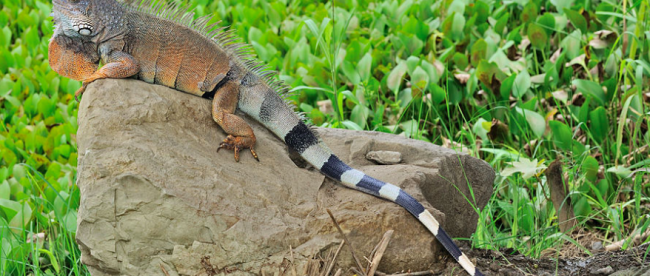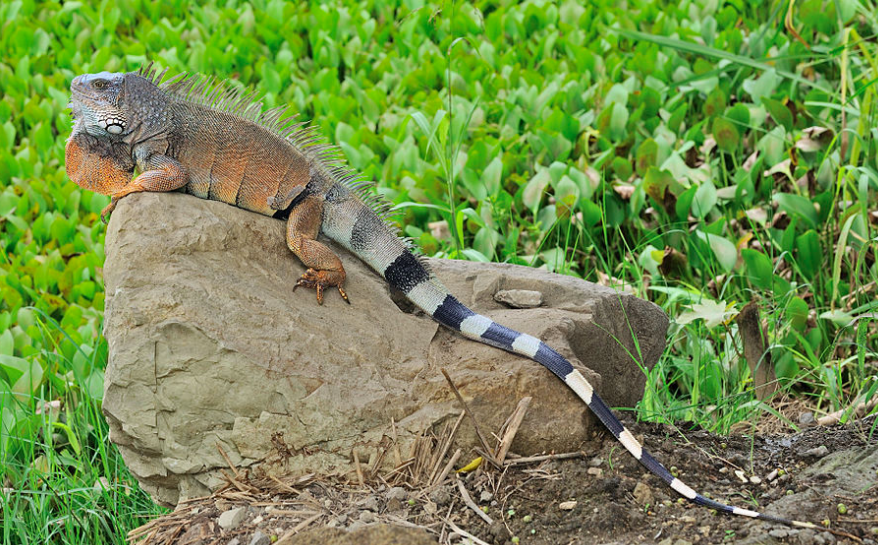What To Do When Iguanas Fall From the Sky


Green iguanas, pictured above, aren’t native to South Florida, but they’ve carved out a home for themselves in the region. And who can blame them? It’s usually warm, there are lots of trees, and — really, there’s not much else these cold-blooded herbivores need to survive.
Unfortunately for them, last night was unusual — South Florida wasn’t so warm, with temperatures approaching freezing. And as a result, if you live near Miami, Florida, there’s a nonzero chance that, if you went outside before sunrise today, you saw something odd: iguanas falling from the sky.
In winter, the average daily low temperature in the Miami dips to about 65 degrees Fahrenheit (or about 18 degrees Celsius), but every few years, you’ll have a day or two which dips toward the low-40s Fahrenheit (5 degrees Celsius). When that happens, people tend to stay inside where heating systems can help out a bit and if not, there are blankets and hot soup to be found. Iguanas are not so lucky; their adopted habitats don’t provide much shielding from the cold temperatures. And being cold-blooded, that’s a problem: at temperatures in the low 40s, the iguanas freeze, and, now more ice pop than lizard, they tend to fall out of their trees. Per one report from a cold snap in 2008, a local park manager “found dozens on the bike path after a major cold snap,” and from last year, here’s a great picture of one which fell from a tree and landed on the edge of a pool.
But don’t worry too much about the iguanas. They’re not dead, as the National Weather Service advised last night on Twitter. Rather, they’re in a cold-induced stasis-like state, effectively (but unintentionally) hibernating. Once temperatures rise, the iguanas will warm up and come back to life.
So to answer the question: what do you do when iguanas fall from the sky? Simply: do nothing. Even picking up a frozen iguana is a bad idea; per the Washington Post, “the reptiles could become frightened as they warm” and “like any wild animal, it will try to defend itself.” And it’s best to not be on the wrong end of an attack from a scared, half-frozen iguana. However, it may be a good idea to keep your head up if you’re walking under trees on a cold Florida day.
Bonus fact: In 1980, Columbia Pictures released the movie “The Blue Lagoon,” which contained some on-location shoots on the island of Fiji. The movie was, by and large, a success, and a result, a lot of people got their first glimpse at the island’s native flora and fauna. Among those people was John Gibbons, a herpetologist, who noticed something off: a species of iguana he didn’t recognize. It turned out that Gibbons, while sitting in the movie theater, discovered a previously-unknown species of iguana, now called the Fiji crested iguana.
From the Archives: San Diego’s Frozen Zoo: A unique experience. No iguanas, though.
